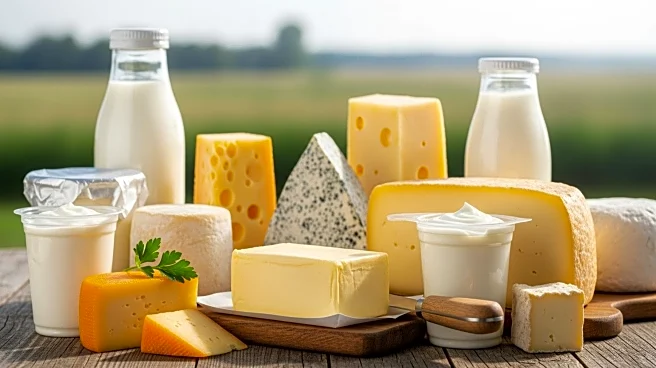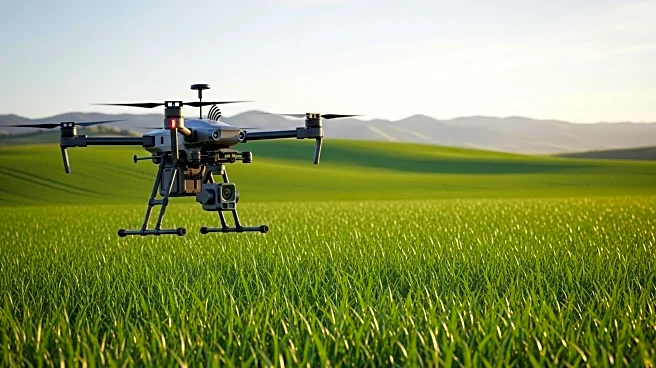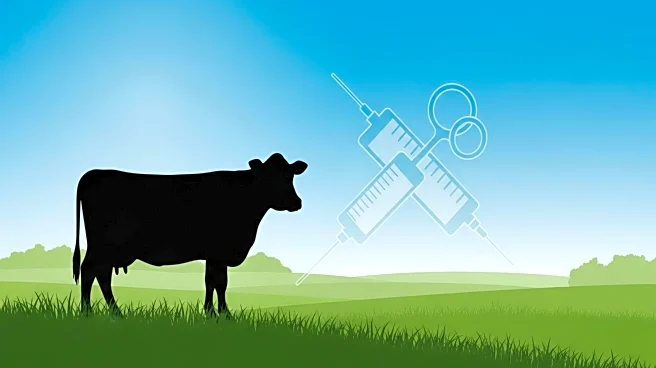What's Happening?
At the 2025 World Dairy Expo, veterinarian Jen Roberts from Boehringer Ingelheim discussed new guidelines for treating mastitis in dairy cows. The focus is on distinguishing between infection and inflammation, and using short-duration antibiotic treatments for Gram-positive pathogens. This approach aims to reduce antibiotic use and improve milk production. By culturing mastitis cases, farmers can identify the type of bacteria and apply targeted treatments, reducing antibiotic use by about two-thirds. The strategy also emphasizes the importance of identifying contagious mastitis cases, which require specific attention.
Why It's Important?
The shift towards targeted, short-duration antibiotic treatments for mastitis reflects a broader trend in agriculture towards responsible antibiotic use. This approach not only benefits animal health but also supports consumer confidence in dairy products by ensuring a safe and consistent food supply. Reducing antibiotic use aligns with global efforts to combat antibiotic resistance, a significant public health concern. Additionally, the economic benefits for farmers include reduced costs associated with milk discard and treatment, enhancing profitability.
What's Next?
The adoption of these new mastitis treatment protocols may lead to widespread changes in dairy farming practices. Farms will need to implement systems for consistent sample collection and culture analysis to effectively apply these guidelines. As more farms adopt these practices, there may be increased demand for on-farm culture resources and training. The dairy industry could see improved milk quality and production efficiency, potentially influencing market dynamics and consumer perceptions.
Beyond the Headlines
The emphasis on antimicrobial stewardship in mastitis treatment highlights ethical considerations in animal agriculture. Responsible antibiotic use is crucial for maintaining public trust and ensuring sustainable farming practices. This development may encourage further research into alternative treatments and preventive measures for mastitis, contributing to long-term improvements in animal health and welfare.











